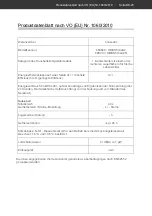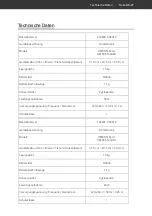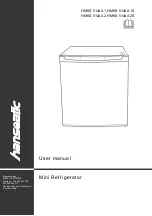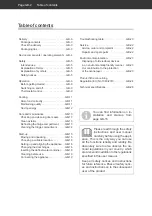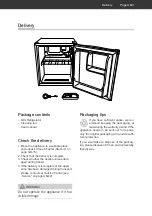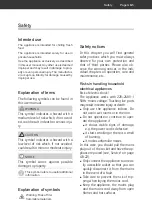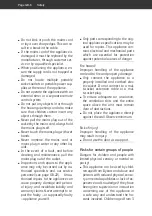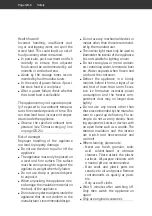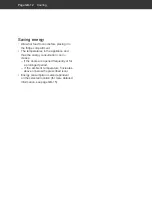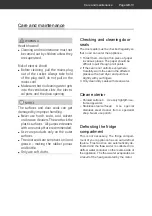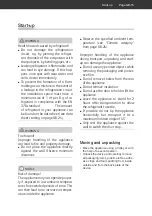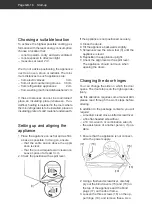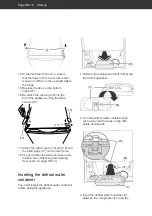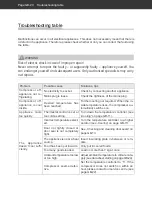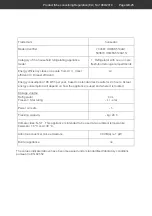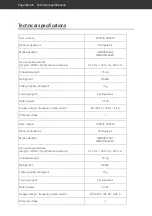
Cooling
Page GB-11
WARNING
Danger of explosion!
Improper handling of the appliance
can lead to explosions.
■
Do not store explosive substances or
spray cans with flammable propel-
lants inside the appliance, as they
may cause ignitable gas-air mixtures
to explode.
■
Alcohol should only be stored upright
and tightly sealed.
CAUTION
Health hazard!
Contaminated foods can cause health
problems.
■
Opening the door for long periods can
cause a significant increase of the
temperature in the compartments of
the appliance.
■
Clean regularly surfaces that can
come in contact with food and acces-
sible drainage systems.
■
Store raw meat and fish in suitable
containers in the refrigerator, so that
it is not in contact with or drip onto
other food.
■
If the refrigerating appliance is left
empty for long periods, switch off,
defrost, clean, dry, and leave the door
open to prevent mould developing
within the appliance.
Store food correctly
(14)
(1)
(2)
(4)
(5)
• Fill the fridge compartment in such a way
that the temperature conditions inside are
used to their full potential:
– Place spreadable butter and cheese
high on the top shelves (14) or the small
door shelf (1). It is warmest here.
– Position bottles and drinks cartons in the
bottle compartment in the door shelf (2).
Position full containers closer to the
hinge in order to reduce the strain on
the door.
– Place cooked or baked goods, fresh
meat, game, poultry, bacon, sausage
and raw fish at the bottom of the refrig-
erator (4). This is where the temperature
is lowest.
Maintaining quality
• To maintain the flavour and freshness of
food in the fridge compartment, only place
packaged food in the fridge compartment.
Use special plastic food containers or
standard food wrap.
• Place food in a way that allows air to
circulate freely in the refrigerator. Do not
cover the wire rack (5) with paper or any-
thing similar.
• Do not place food directly against the
back wall. Otherwise it may freeze to the
back wall.
Cooling

